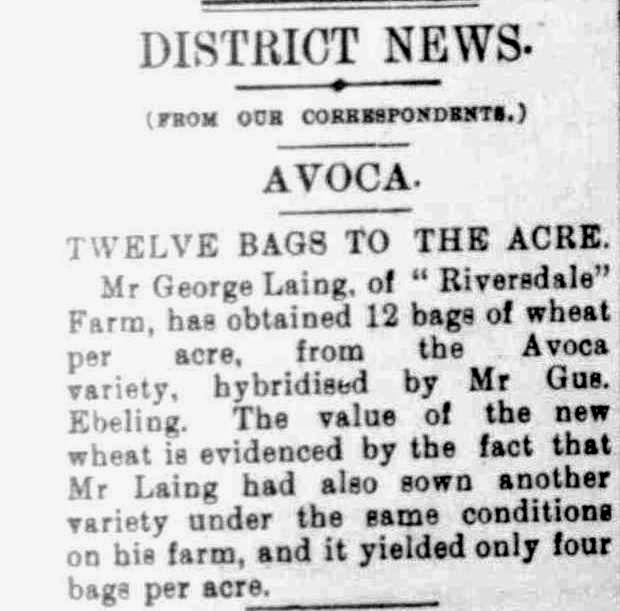Vince Samers from Avoca, who was reported as applying for the Australian Expeditionary Force by both the Avoca Free Press and the Avoca Mail, appears to have been rejected because he was too short and his chest measurement was below the specified minimum.
 |
| The Avoca Mail 18 August 1914 |
Series MT1486/1 in the National Archives of Australia contains applications to enlist in the Australian Imperial Force. As well as successful applications it has records for men rejected for service. However, the series dates from 1915, and it appears early applications are not included in the series. The name Samers does not come up in the Archives' record search for that series.
However, on 7 September 1915, Samers' application to enlist was successful.
On his attestation form Samers indicated that he had previously been rejected because of his chest measurement.
 |
| National Archives of Australia: Australian Imperial Force, Base Records Office; B2455, First Australian Imperial Force Personnel Dossiers, 1914-1920; SAMERS Vincent Robert : Service Number - 2209 : Place of Birth - Shepparton VIC : Place of Enlistment - Melbourne VIC : Next of Kin - (Father) SAMERS William, page 1. |
In 1915 his medical examination found he was 5' 5 1/2" with a chest measurement of 31 to 32 1/2 inches.
 |
| NAA; B2455, SAMERS Vincent Robert, page 3. |
Gus Ebeling (Lieut.) 5' 11" chest 36 1/2" (from Boer War service record)
Matthew Rafferty (706) 5' 9" chest 37 1/2 to 40 "
Reg Johnson (679) 5' 6" chest 33 to 36 "
W French (670) 5' 6" chest 35 to 37 1/2 "
D Summers (635) 5' 6 1/2" chest 33 to 35 1/2 "
In August 1914 the standard for acceptance was a minimum height of 5 feet 6 inches with a minimum chest measurement of 34 inches.The standard was lowered in June 1915 to a minimum height of 5 feet 2 inches. From an advertisement in the Argus it seems the chest measurement standard was also reduced to 33 inches. During the first year of the war about one third of all volunteers were rejected. ("Enlistment Standards." Encyclopaedia. Australian War Memorial. <http://www.awm.gov.au/encyclopedia/enlistment/>.)
 |
| Display Advertising. (1915, June 30). The Argus (Melbourne, Vic. : 1848 - 1957), p. 8. Retrieved August 25, 2014, from http://nla.gov.au/nla.news-article1528066 |













